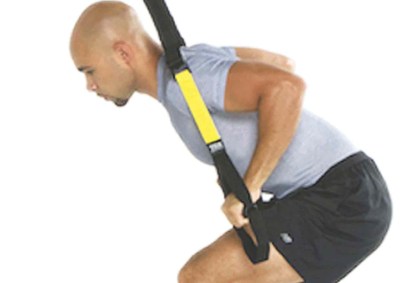What Is Functional Training?
Functional Training was originally employed by physical therapists and rehabilitation staff in order to restore strength and response to the body after accidents. However functional training has found a new lease of life in assisting with a variety of different day-to-day activities through increasing the range of motion, strength and ability for the individual through a variety of different tasks.
Things such as lifting, bending and back strength, benefit enormously from functional training. Whilst most people with a keen interest in fitness are usually quite flexible and fit, even the healthiest person can discover problems or have difficulty participating in these types of activities, especially later in life. Functional training prepares the body for these forms of activity common in our daily lives.
The exercises within functional training have a high focus on the strengthening of abdominal muscles and back muscles. Through strengthening these muscles overall, your strength and balance will create more efficient movement patterns, which lead to better core strength and less injuries. But strength is not the only benefit. Coordination improves through training or retraining the muscles to work together and the joints are also stabilised and the range of motion is increased.
For example, a squat is a functional exercise because it trains the muscles used when you rise up and down from a chair or pick up low objects. By training your muscles to work the way they do in everyday tasks, you prepare your body to perform well in a variety of common situations. Functional fitness exercises can be done at home or at the gym. Gyms may offer functional fitness classes or incorporate functional fitness into boot camps or other types of classes. Exercise tools, such as fitness balls, kettle bells and weights, are often used in functional fitness workouts.
What are the benefits of functional fitness training?
Functional exercises tend to be multi-joint, multi-muscle exercises. Instead of only moving the elbows, for example, a functional exercise might involve the elbows, shoulders, spine, hips, knees and ankles. This type of training, properly applied, can make everyday activities easier, reduce your risk of injury and improve your quality of life. This type of training may be especially beneficial as part of a comprehensive program for older adults to improve balance, agility and muscle strength, and reduce the risk of falls.
The easy way to begin to add functional movements to your training is to simply write down what you do every day. What are your physical challenges? If you’re a secretary you may find that your legs and back ache at the end of the day from picking files from the floor. These would be your first areas to target. Don’t think of fitness as something that is done only in a gym. By simply taking advantage of your every day movements you can turn your office or home into an effective functional training area!
It’s about conditioning your body to function correctly during day-to-day activities, whether that means lifting your kids or carrying a laundry basket up a long set of stairs. Although it’s been a trendy exercise topic for years, tailoring your workout to include functional fitness exercises is more than just throwing around a buzzword.
Give Your Workout a Purpose
Spending an hour at the gym shouldn’t just be about toning your body to bikini perfection. Instead of just isolating specific muscles, try exercises that will help you in your normal life when you’re lifting heavy objects or reaching for snacks at the top of your cupboard. This will not only keep you mobile as you age, but will also help prevent injury and reduce lower back pain.
Improve Balance and Coordination
Many of functional fitness activities focus on your core and abdomen, and strengthening these muscles will do wonders for your balance. That can be the difference between pulling a tendon when you slip down the stairs or catching yourself before you fall.
Challenge Your Muscles
Moving from normal gym machine exercises to functional fitness exercises can be a shock to your body – those functional exercises can be a lot harder! Mixing up your fitness routine with versatile functional fitness exercises not only prevents plateauing but will also condition your body to correctly and safely perform everyday activities.
Prevent Injury
Besides preventing injuries from day-to-day life, functional training will help prepare your body when life becomes unpredictable. Something like a broken heel or a missed step leads to potential injury-inducing falls if you’re not conditioned to move your body the right way. And no matter how much you work on your balance, sometimes falls and accidents are unavoidable.
Functional fitness exercise trains your body to react correctly when something unexpected happens, so a minor tumble off a curb doesn’t turn into a sprained ankle.
For those who like variety, there are plenty of types of exercises you can take part in for functional training. The goal is to offer resistance. The use of dumbbells, kettle bells and even cable machines are all highly effective. The highly portable and travel friendly resistance tube is also a great friend to functional training. Due to the choice available, it is a good idea to do plenty of research before you start. That way you can find the right exercises to match and compliment your current fitness regimes and sporting activities.
The goal for functional training should be to slowly but steadily progress during your workouts. Pay attention to the signals you get from your body so you can continue to move forward at a good pace. Be mindful to change your functional training routine on a regular basis so as to remain well rounded in your approach and result. One of the best ways to get the most out of functional training is with a coach or a personal trainer. As professionals who understand both your level of fitness and what areas for improvement you may have, working with a coach or trainer can really help you understand where your focus should lie and when it is time to transition to different exercises and what is right for you.
Now is the time to make functional training part of your lifestyle. From competitive edge through to long lasting health and fitness benefits received, functional training offers a practical, useful and important type of exercise with a proven track record in improving a person’s quality of life.








